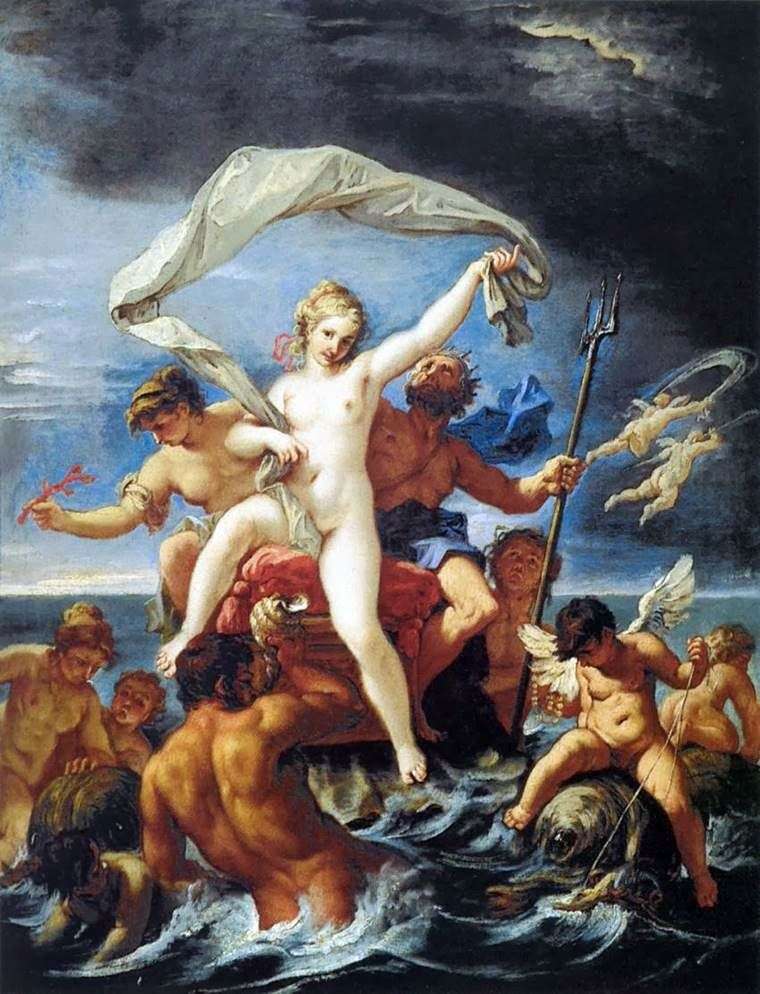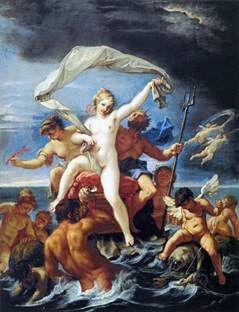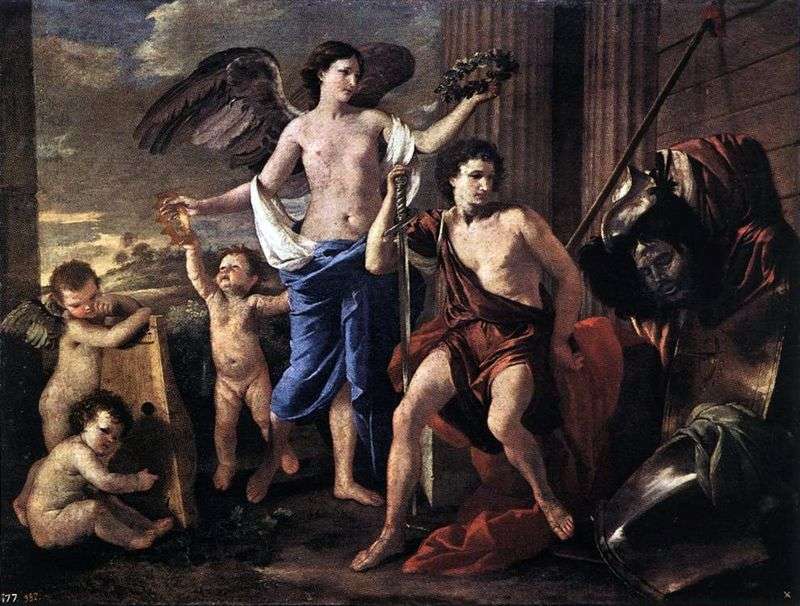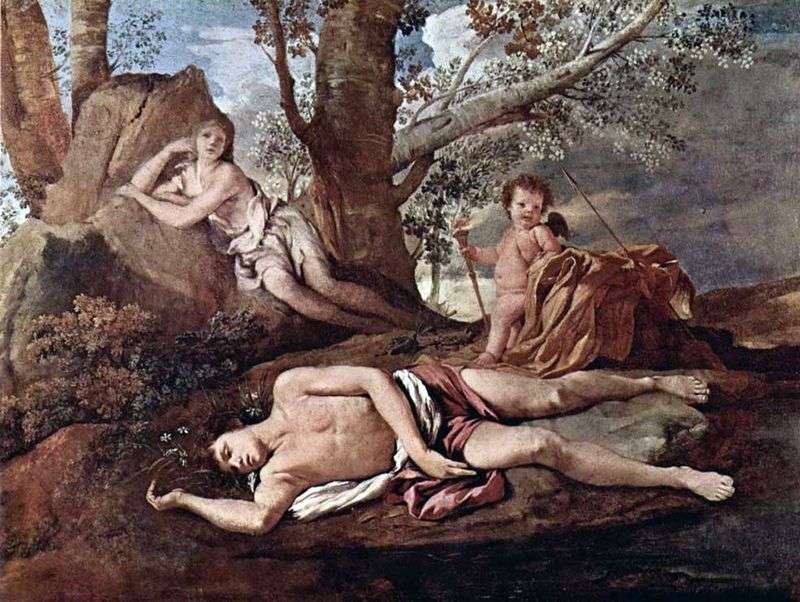
In the center of the picture is depicted Nereid Amphitrite, Neptune’s spouse. She sits on the bull, whose body ends with a fish tail surrounded by numerous retinues. The two Nereids respectfully support the elbow and the pink blanket of Amphitrite, and the two newts trumpets her glory. The figure of Neptune is shifted to the edge of the picture to the left.
With one hand he controls a troika of swiftly rushing horses, and the other holds a trident, a traditional attribute of the god of the seas. His gaze is turned to the beautiful Amphitrite. Still to the left, above the figure of Neptune, we see the chariot of the goddess of love Aphrodite, accompanied by cupids and with a lit torch in her hands.
Other cupids shower the main characters with flowers of roses and myrtle, symbolizing the love inclination and marriage of Neptune and Amphitrite. One of the cupids is aiming from a bow at Neptune, and the arrows of the second have already reached a man who carries a beautiful nymph on his shoulders. But who is represented in this scene of abduction?
The man’s face is not visible, it is covered with a hand, and therefore it can be assumed that Nereid Galatea is depicted here, and Polyphemus, in love with her, who was considered the son of Neptune. And we understand his gesture: the cyclop was outwardly ugly, and the artist avoided the image of ugliness in his painting.
 Le triomphe de Neptune et des amphitrites – Nicolas Poussin
Le triomphe de Neptune et des amphitrites – Nicolas Poussin Triumph of Amphitrite by Giovanni Battista Tiepolo
Triumph of Amphitrite by Giovanni Battista Tiepolo Neptune and Amphitrite by Sebastiano Ricci
Neptune and Amphitrite by Sebastiano Ricci Neptune et Amphitrite – Sebastiano Ricci
Neptune et Amphitrite – Sebastiano Ricci Bacchus and Ariadne (Bacchanalia) by Nicolas Poussin
Bacchus and Ariadne (Bacchanalia) by Nicolas Poussin The Triumph of David by Nicolas Poussin
The Triumph of David by Nicolas Poussin Apollo and the Muses (Parnassus) by Nicolas Poussin
Apollo and the Muses (Parnassus) by Nicolas Poussin Narcissus and Echo by Nicolas Poussin
Narcissus and Echo by Nicolas Poussin